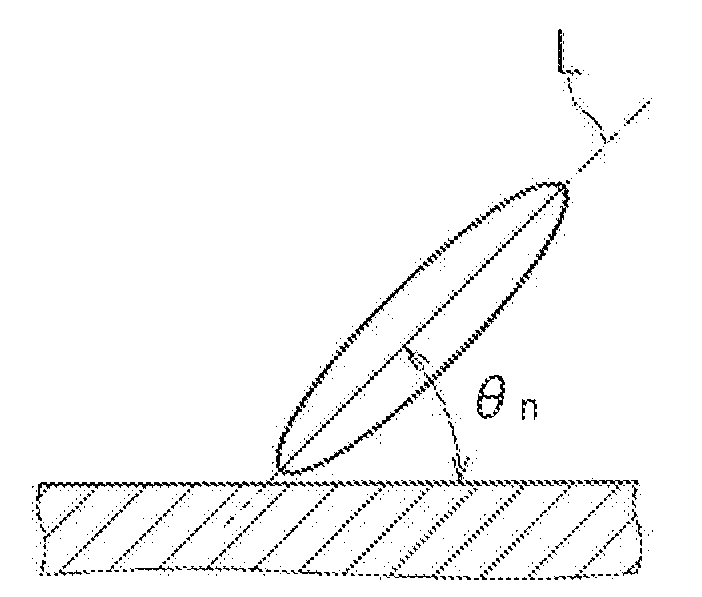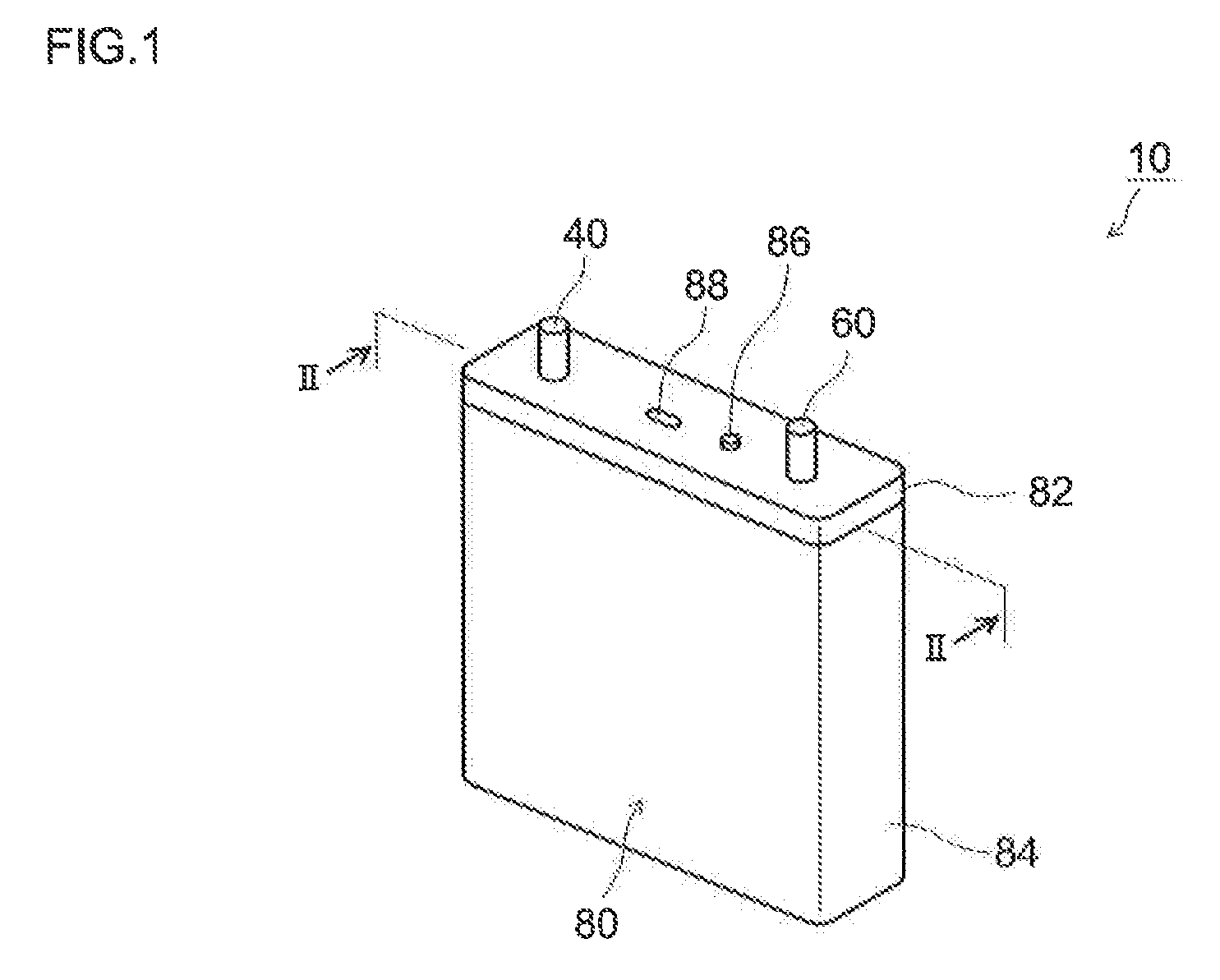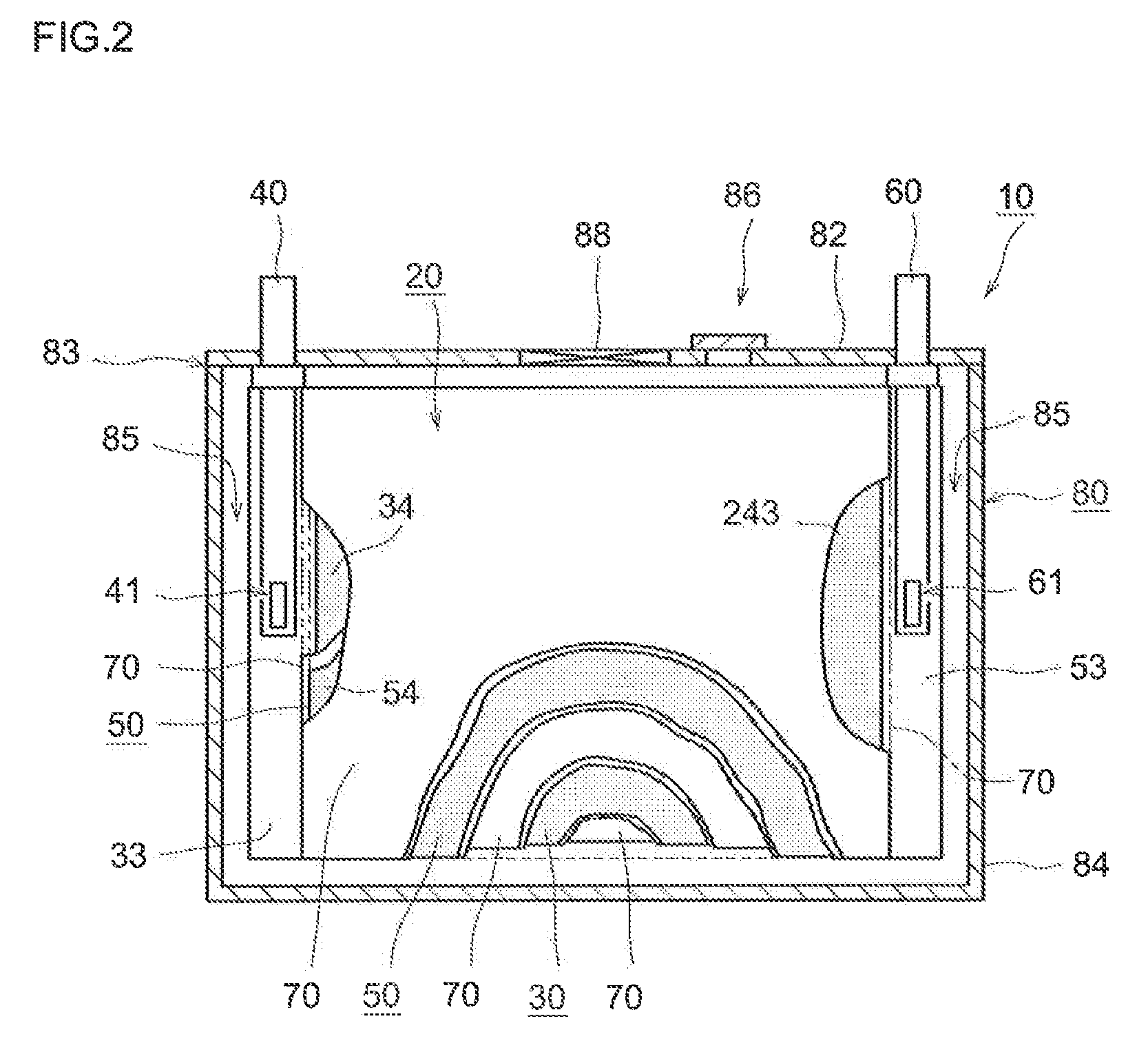Lithium secondary battery
a secondary battery and lithium technology, applied in the field of lithium secondary batteries, can solve the problems of poor dc resistance and the inability to reduce the internal resistance of the electrode while securing as much capacity as possible, and achieve the effects of reducing diffusion resistance, good balance, and reducing dc resistan
- Summary
- Abstract
- Description
- Claims
- Application Information
AI Technical Summary
Benefits of technology
Problems solved by technology
Method used
Image
Examples
Embodiment Construction
[0032]In the present description, the term “lithium secondary battery” denotes ordinarily a battery that uses lithium ions as charge carriers, and that can be repeatedly changed, and encompasses typically lithium ion batteries, lithium polymer batteries and the like. In the present description, the term “active material” denotes a substance which, in a lithium secondary battery, can reversibly store and release (typically in the form of intercalation and deintercalation) a chemical species (i.e. lithium ions) that constitutes a charge carrier.
[0033]The lithium secondary battery provided by the present invention comprises a positive electrode provided with a positive electrode active material layer on a positive electrode collector, a negative electrode provided with a negative electrode active material layer on a negative electrode collector, and a nonaqueous electrolyte, and the lithium secondary battery is characterized by the configuration of the negative electrode. The configura...
PUM
| Property | Measurement | Unit |
|---|---|---|
| average aspect ratio | aaaaa | aaaaa |
| density | aaaaa | aaaaa |
| specific surface area | aaaaa | aaaaa |
Abstract
Description
Claims
Application Information
 Login to View More
Login to View More - R&D
- Intellectual Property
- Life Sciences
- Materials
- Tech Scout
- Unparalleled Data Quality
- Higher Quality Content
- 60% Fewer Hallucinations
Browse by: Latest US Patents, China's latest patents, Technical Efficacy Thesaurus, Application Domain, Technology Topic, Popular Technical Reports.
© 2025 PatSnap. All rights reserved.Legal|Privacy policy|Modern Slavery Act Transparency Statement|Sitemap|About US| Contact US: help@patsnap.com



